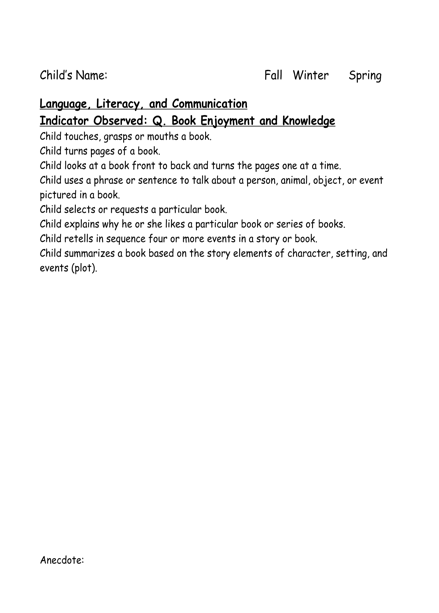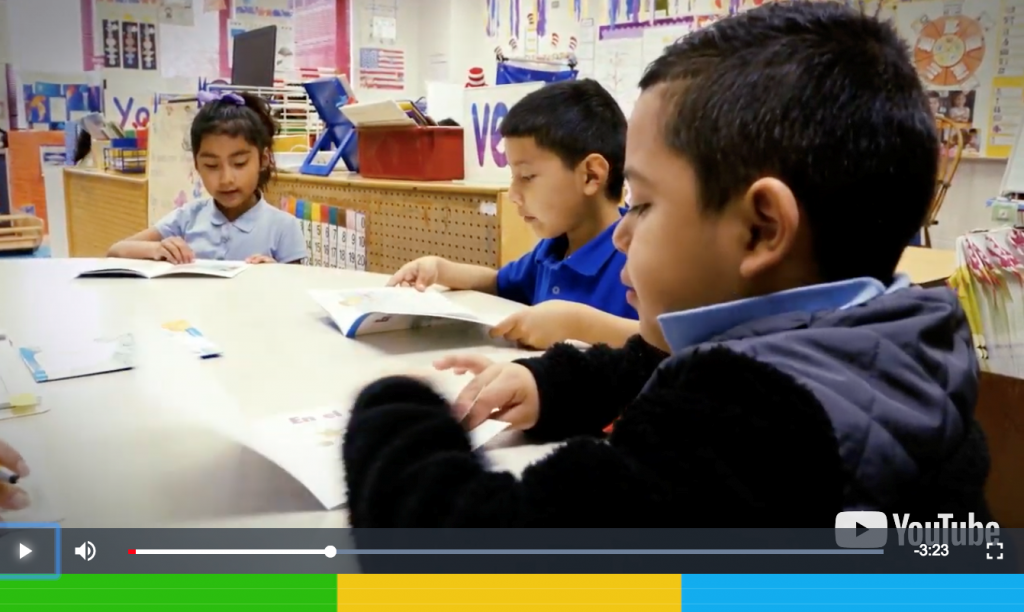I am writing this blog around 7:00pm having just finished dinner BUT still a little bit hungry for something sweet. One of my favorite go-to sweet fixes is the little but mighty M & M. There are lots of things to love about M & M’s like 1) a handful of these sweet little chocolate darlings can be just right, 2) they come in all kinds of flavors so I can have peanut one day, pretzel the next, and even mint flavor after that, and 3) as the slogan says, “They melt in your mouth, not in your hand” (unless you are in Las Vegas during July…but I digress). As you can tell, I love candy M & Ms. Let’s expand this love of M & Ms into thinking about formative assessments/feedback for early learning.
NAEYC shares that “assessing children, which includes observing them and closely considering their work, is key for teachers in their efforts to get to know each child and his or her abilities and needs…[teachers] assess in order to
- Monitor children’s development and learning,
- Guide our planning and decision making
- Identify children who might benefit from special services or supports, and report and communicate with others (McAfee, Leong, & Bodrova 2004)
The M & M Factor can help us to get formative assessments “just right” for early learners. The first M stands for Meaningful. Formative assessments need to focus on important learning that can be captured through ongoing interactions and observations of our students. The second M stands for Manageable. Assessments should be simple in design, easy to use, and adaptable to different needs of students.
Let’s look at different ways that the M & M Factor works in early learning classrooms…

In this Blended PreK classroom, Amy Haffner is using data “look for” sheets to observe how students put their small group learning concepts and language into independent or peer play during Center time. What makes these “look for” data sheets MEANINGFUL is that they are aligned to the district/state early learning standards. What makes them MANAGEABLE is that Amy uses just one or two learning indicators to “look-n-listen” for during any Center observation. She keeps her notes simple, focused with clear descriptions and verbatim statements. She also uses them to monitor learning progress over Fall, Winter and Spring!
click here to download the resource
Formative assessments is embedded into the instructional design of Martha Mancera’s Dual Language Kindergarten Classroom. In small groups or as an individual learning extension after a whole group language/science lesson, Martha is monitoring student learning through a variety of means, including specifically formulated questions, differentiated as needed to elicit evidence of student understanding. In the small group, running records are used to monitor and adjust instruction during the reading/thinking process.
After a whole group lesson, a writing extension gives Ms Mancera an opportunity to monitor and extend individual student learning through journal writing. Individual feedback is given on spelling words, key content, and questions that students have regarding the writing process. These assessments have the M & M Factor because they allow the teacher to be adjusting instruction in “real learning time” based on what she is observing and documenting.

One of the easiest and most powerful ways to add Meaningful & Manageable Assessments into your teaching is through focusing on the quality of your student feedback. Feedback is responding in personalized and purposeful ways to what children say and do that deepens their understanding or encourages them to persist in learning tasks or reach a deeper level of understanding. I often think about feedback as giving cues, clues, and questions that help students to keep thinking but DOES NOT give the “quick answer”. Here are some early learning M & M Feedback strategies/examples that you can put into practice tomorrow!
| Feedback Strategy | Examples |
| Encouragement and Affirmation: Encouraging children and specifically praising the effort/process so they will keep trying to be success at challenging tasks. | *Recognition with name and descriptive action taken
*Reinforcement of positive action or effort *Student persistence |
| Feedback Loops: Using conversations with children to increase their understanding; continuing these exchanges until children reach an understanding rather than stopping with a single clarifying comment | *Back-n-forth exchanges using key words with students is to reinforce receptive and expressive language
*Follow-up questions like “What did you discover? How did you do that? What was hard? How did you figure that out? What have you tried so far? |
| Prompting Thought Processes: Asking children to explain why they thought or did something. | *What did you do first? Next?
*Tell me what you have tried. *Tell me about… |
| Scaffolding: Giving children hints or other help when they have trouble completing a task or understanding a concept. | *Have you tried _____? How did that work?
*Remember in our book what the ____ did? Could that help you too? *Look at this picture on the chart. Use this to figure out what to do next. |
| Providing Information (especially focusing on key vocabulary): Explaining things when children indicate they are confused; adding new information when children indicate they have a basic understanding | *Expansion of information/visual cues
*Clarification with examples or comparison *Specific feedback with modeling or think aloud with picture clues |
*Adapted from Teachstone Training, LLC 2018
Whether it is “look-n-listen for” data sheets, running records, formative feedback or ______ (fill in the blank), there are endless ways to make formative assessment more meaningful AND manageable. What formative assessments do you use on a regular basis that might have the “M & M factor”?
